Überblick über Dual-Phase-Legierungspulver
Dualphasen-Legierungspulver sind Spezialwerkstoffe, die in verschiedenen Industriezweigen aufgrund ihrer einzigartigen Kombination von Eigenschaften wie hohe Festigkeit, Duktilität, Verschleiß- und Ermüdungsbeständigkeit eingesetzt werden. Diese Pulver bestehen aus zwei unterschiedlichen Phasen, in der Regel einer Kombination aus weichen und harten Phasen, die zusammenwirken, um die Gesamtleistung des Werkstoffs zu verbessern.
In diesem Artikel befassen wir uns mit den Besonderheiten von Dualphasenlegierungspulvern, einschließlich ihrer Zusammensetzung, Eigenschaften, Anwendungen und der verschiedenen auf dem Markt erhältlichen Modelle. Wir werden auch die Vor- und Nachteile dieser Pulver im Vergleich zu anderen Materialien untersuchen und Einblicke in Lieferanten, Preise und Normen geben.

Zusammensetzung des Dual-Phase-Legierungspulvers
Pulver aus Zweiphasenlegierungen bestehen aus einer Mischung von zwei verschiedenen Metallphasen, in der Regel einer weichen und einer harten Phase. Die weiche Phase sorgt häufig für Duktilität und Zähigkeit, während die harte Phase für Festigkeit und Verschleißfestigkeit sorgt. Die Zusammensetzung dieser Pulver kann je nach Verwendungszweck erheblich variieren.
| Metallpulver-Modell | Zusammensetzung | Weiche Phase | Harte Phase | Andere Elemente |
|---|---|---|---|---|
| DP1001 | Fe-Cr-Mn | Ferrit | Martensit | Mo, Ni |
| DP1002 | Fe-Mo-Ni | Ferrit | Bainit | Cr, C |
| DP1003 | Fe-Mn-Si | Austenit | Martensit | Cr, Ni |
| DP1004 | Ti-Al-V | Alpha-Titan | Beta-Titan | O, N |
| DP1005 | Ni-Cr-Mo | Austenit | Ferrit | Ti, Al |
| DP1006 | Fe-C-Mo | Martensit | Ferrit | Ni, Mn |
| DP1007 | Co-Cr-Mo | Austenit | Hartmetalle | Ni, W |
| DP1008 | Fe-Ni-Cr | Ferrit | Bainit | Mo, Mn |
| DP1009 | Ni-Fe-Cr | Austenit | Ferrit | Al, Ti |
| DP1010 | Fe-Mn-C | Austenit | Martensit | Cr, Mo |
Wichtigste Erkenntnisse:
- Die Zusammensetzung von Dualphasenlegierungspulvern variiert je nach Anwendung und gewünschten Eigenschaften.
- Das Vorhandensein sowohl weicher als auch harter Phasen ist entscheidend für das einzigartige Gleichgewicht zwischen Duktilität und Festigkeit des Materials.
Merkmale von Dual-Phase-Legierungspulvern
Die Eigenschaften von Pulvern aus Zweiphasenlegierungen werden weitgehend durch ihre Zusammensetzung und das Verhältnis zwischen der weichen und der harten Phase bestimmt. Diese Pulver weisen eine einzigartige Kombination von mechanischen Eigenschaften auf, die sie für anspruchsvolle Anwendungen geeignet machen.
Mechanische Eigenschaften
| Eigentum | Typischer Bereich | Bedeutung |
|---|---|---|
| Zugfestigkeit | 500 – 1500 MPa | Hochfeste Anwendungen |
| Duktilität | 10% – 30% Dehnung | Umformbarkeit und Zähigkeit |
| Härte | 200 – 600 HV | Verschleißfestigkeit |
| Ermüdungsfestigkeit | Hoch | Langfristige Haltbarkeit |
| Korrosionsbeständigkeit | Mäßig bis hoch | Chemische Beständigkeit |
| Dichte | 7.0 – 8,5 g/cm³ | Beeinflusst Gewicht und Masse |
Thermische Eigenschaften
| Eigentum | Typischer Bereich | Bedeutung |
|---|---|---|
| Schmelzpunkt | 1300°C – 1600°C | Hochtemperaturanwendungen |
| Wärmeleitfähigkeit | 15 – 25 W/m-K | Wärmeableitung |
| Thermische Ausdehnung | 10 – 15 µm/m-K | Stabilität der Abmessungen |
Wichtigste Erkenntnisse:
- Dualphasen-Legierungspulver bieten ein ausgewogenes Verhältnis von hoher Festigkeit und Duktilität und eignen sich daher ideal für Anwendungen, bei denen beide Eigenschaften entscheidend sind.
- Die Pulver weisen außerdem eine gute Verschleiß- und Korrosionsbeständigkeit auf, was ihre Leistungsfähigkeit in rauen Umgebungen erhöht.
Anwendungen von Dual-Phase-Legierungspulver
Pulver aus Zweiphasenlegierungen werden aufgrund ihrer vielseitigen Eigenschaften in einer Vielzahl von Branchen eingesetzt. Von der Automobilindustrie bis zur Luft- und Raumfahrt spielen diese Pulver eine entscheidende Rolle bei der Herstellung von Hochleistungskomponenten.
Branchen und Anwendungen
| Industrie | Anwendungen | Vorteile der Verwendung von Dual-Phase-Legierungspulvern |
|---|---|---|
| Automobilindustrie | Motorkomponenten, Getriebe, Fahrwerksteile | Erhöhte Festigkeit und Ermüdungsbeständigkeit |
| Luft- und Raumfahrt | Strukturelle Komponenten, Turbinenschaufeln | Hohes Festigkeits-Gewichts-Verhältnis, thermische Stabilität |
| Industrielle Maschinen | Schneidwerkzeuge, Verschleißteile, Lager | Abriebfestigkeit, Langlebigkeit |
| Medizinische | Implantate, chirurgische Instrumente | Biokompatibilität, Korrosionsbeständigkeit |
| Öl & Gas | Bohrer, Pipelines, Ventile | Korrosionsbeständigkeit, Zähigkeit |
| Elektronik | Steckverbinder, Kühlkörper, Gehäuse | Wärmeleitfähigkeit, Haltbarkeit |
| Marine | Propeller, Wellen, Unterwassergehäuse | Korrosionsbeständigkeit, Festigkeit |
| Bauwesen | Bewehrungen, Befestigungselemente, Strukturelemente | Hohe Festigkeit, Zähigkeit |
| Verteidigung | Panzerung, Waffenkomponenten | Ballistische Beständigkeit, Haltbarkeit |
| Energie | Turbinenkomponenten, Wärmetauscher | Hohe Temperatur- und Verschleißfestigkeit |
Wichtigste Erkenntnisse:
- Pulver aus Zweiphasenlegierungen sind in Industrien, in denen sowohl Festigkeit als auch Duktilität erforderlich sind, unverzichtbar.
- Dank ihrer Vielseitigkeit können sie in einer Vielzahl von Anwendungen eingesetzt werden, von Alltagsgegenständen bis hin zu Spezialgeräten.
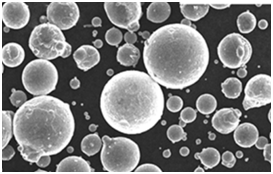

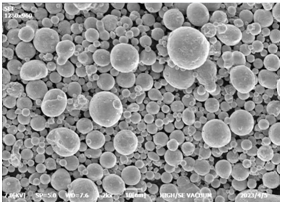

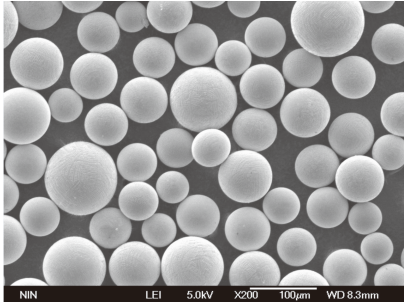
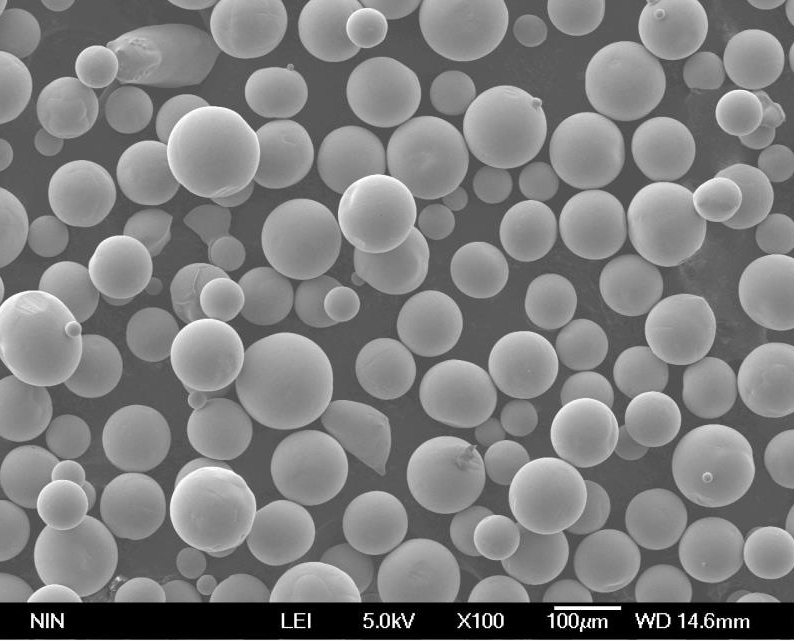
Spezifikationen, Größen, Güteklassen und Normen
Bei der Auswahl von Dualphasen-Legierungspulvern für bestimmte Anwendungen ist es wichtig, ihre Spezifikationen zu berücksichtigen, einschließlich der Größen, Qualitäten und der Einhaltung von Industrienormen. Dadurch wird sichergestellt, dass das gewählte Pulver die erforderlichen Leistungskriterien erfüllt.
Spezifikationen und Größen
| Modell | Partikelgrößenbereich | Klasse | Standard |
|---|---|---|---|
| DP1001 | 20 – 50 µm | Note A | ASTM B243 |
| DP1002 | 15 – 45 µm | Note B | ISO 3923-1 |
| DP1003 | 10 – 40 µm | Raster C | AMS 4998 |
| DP1004 | 25 – 55 µm | Note A | MIL-P-46111 |
| DP1005 | 20 – 50 µm | Note B | DIN EN 10204 |
| DP1006 | 15 – 45 µm | Raster C | ISO 4499-2 |
| DP1007 | 10 – 40 µm | Note A | ASTM F2885 |
| DP1008 | 25 – 55 µm | Note B | JIS Z 2506 |
| DP1009 | 20 – 50 µm | Raster C | ISO 4499-1 |
| DP1010 | 15 – 45 µm | Note A | ASTM B214 |
Normen und Einhaltung
| Standard | Beschreibung | Bedeutung |
|---|---|---|
| ASTM B243 | Standardterminologie der Pulvermetallurgie | Gewährleistet Einheitlichkeit der Definitionen |
| ISO 3923-1 | Bestimmung der scheinbaren Dichte von Pulvern | Hilft bei der Qualitätskontrolle |
| AMS 4998 | Normen für Titanlegierungspulver | Entscheidend für die Luft- und Raumfahrtindustrie |
| MIL-P-46111 | Militärische Spezifikation für Metallpulver | Konformität für Anwendungen im Verteidigungsbereich |
| DIN EN 10204 | Zertifizierung metallischer Erzeugnisse | Gewährleistet die Rückverfolgbarkeit von Materialien |
| ISO 4499-2 | Mikrostruktur von Metallpulvern Normen | Wesentlich für die Konsistenz |
| ASTM F2885 | Normen für Pulver zur additiven Fertigung (AM) | Wichtig für AM-Prozesse |
| JIS Z 2506 | Japanische Industrienormen für Metallpulver | Entscheidend für den internationalen Handel |
| ASTM B214 | Prüfverfahren für die Siebanalyse von Metallpulvern | Gewährleistet die richtige Partikelgrößenverteilung |
Wichtigste Erkenntnisse:
- Die Einhaltung von Industriestandards stellt sicher, dass die Pulver aus Zweiphasenlegierungen die erforderlichen Qualitäts- und Leistungskriterien erfüllen.
- Unterschiedliche Qualitäten und Partikelgrößen ermöglichen die Anpassung an spezifische Anwendungsanforderungen.
Vorteile von Dual-Phase-Legierungspulver
Dualphasenlegierungspulver bieten mehrere Vorteile, die sie für Hersteller und Ingenieure attraktiv machen. Diese Vorteile ergeben sich aus den einzigartigen Eigenschaften, die sich aus der Kombination von weichen und harten Phasen ergeben.
Vorteile gegenüber einphasigen Legierungen
| Vorteil | Erläuterung | Vergleich |
|---|---|---|
| Verbesserte Stärke | Zweiphasenlegierungen weisen eine höhere Zugfestigkeit auf als Einphasenlegierungen, da eine harte Phase zur Verstärkung des Materials vorhanden ist. | Im Vergleich zu einphasigen Legierungen können zweiphasige Legierungen mechanischen Belastungen besser standhalten. |
| Verbesserte Duktilität | Die weiche Phase in zweiphasigen Legierungen sorgt für Duktilität und macht das Material besser formbar, ohne die Festigkeit zu beeinträchtigen. | Bei einphasigen Legierungen wird oft Festigkeit gegen Duktilität eingetauscht, während bei zweiphasigen Legierungen beides erreicht wird. |
| Bessere Abnutzungsbeständigkeit | Die Hartphase in diesen Legierungen bietet eine hervorragende Verschleißfestigkeit und verlängert die Lebensdauer der Bauteile. | Zweiphasen-Legierungen übertreffen Einphasen-Legierungen bei Anwendungen, die eine hohe Verschleißfestigkeit erfordern. |
| Höhere Ermüdungsbeständigkeit | Durch die Kombination der Phasen widerstehen Dualphasenlegierungen besser der Ermüdung, was für Teile, die zyklischen Belastungen ausgesetzt sind, von entscheidender Bedeutung ist. | Einphasige Legierungen können bei wiederholter Beanspruchung versagen, während zweiphasige Legierungen besser abschneiden. |
| Vielseitige Anwendungen | Aufgrund ihrer einzigartigen Eigenschaften eignen sich Dualphasen-Legierungen für eine Vielzahl von Anwendungen, von der Automobilindustrie bis zur Luft- und Raumfahrt. | Einphasige Legierungen sind in ihrem Anwendungsbereich oft eingeschränkt. |
Wichtigste Erkenntnisse:
- Dualphasen-Legierungen schaffen ein Gleichgewicht zwischen Festigkeit und Duktilität, was in der Materialwissenschaft oft eine Herausforderung darstellt.
- Ihre verbesserten Eigenschaften machen sie im Vergleich zu einphasigen Legierungen vielseitiger und langlebiger.
Grenzen von Dual-Phase-Legierungspulvern
Zweiphasenlegierungspulver bieten zwar viele Vorteile, haben aber auch gewisse Einschränkungen. Es ist wichtig, diese Nachteile zu kennen, um fundierte Entscheidungen bei der Materialauswahl zu treffen.
Herausforderungen und Beschränkungen
| Begrenzung | Erläuterung | Auswirkungen auf Anwendungen |
|---|---|---|
| Kosten | Pulver aus Zweiphasenlegierungen sind aufgrund der Komplexität ihrer Zusammensetzung und ihrer Herstellungsverfahren oft teurer in der Herstellung. | Die höheren Kosten können ihre Verwendung auf Hochleistungsanwendungen beschränken, bei denen die Vorteile die Kosten rechtfertigen. |
| Verarbeitungsschwierigkeiten | Das Vorhandensein mehrerer Phasen kann Verarbeitungstechniken wie Sintern und additive Fertigung erschweren. | Unter Umständen sind spezielle Geräte und Verfahren erforderlich, was die Produktionszeit und -kosten erhöht. |
| Begrenzte Verfügbarkeit | Nicht alle zweiphasigen Legierungspulver sind ohne weiteres erhältlich, insbesondere nicht solche mit speziellen Zusammensetzungen. | Dies kann zu längeren Vorlaufzeiten und potenziellen Problemen in der Lieferkette führen. |
| Potenzial für Phasenungleichgewicht | Eine unsachgemäße Verarbeitung oder Kontrolle der Zusammensetzung kann zu einem Ungleichgewicht zwischen der weichen und der harten Phase führen, was suboptimale Eigenschaften zur Folge hat. | Die Leistung des Materials kann beeinträchtigt werden, was sich auf die Zuverlässigkeit des Endprodukts auswirkt. |
| Empfindlichkeit gegenüber der Umwelt | Einige Dualphasenlegierungen können empfindlich auf bestimmte Umweltbedingungen wie hohe Temperaturen oder korrosive Umgebungen reagieren. | Dies kann ihre Verwendung bei bestimmten Anwendungen einschränken, insbesondere bei rauen oder wechselhaften Bedingungen. |
Wichtigste Erkenntnisse:
- Die Komplexität und die Kosten, die mit zweiphasigen Legierungspulvern verbunden sind, können ein Hindernis für ihre breite Anwendung darstellen.
- Die richtige Verarbeitung und die Berücksichtigung von Umweltaspekten sind entscheidend, um das volle Potenzial dieser Materialien auszuschöpfen.
Lieferanten und Preisgestaltung von Dual-Phase-Legierungspulver
Die Wahl des richtigen Lieferanten und die Kenntnis der Preisstruktur sind entscheidend für die Beschaffung von Pulvern aus Zweiphasenlegierungen. Im Folgenden stellen wir einige der wichtigsten Anbieter vor und geben einen Überblick über die Preistrends.
Führende Anbieter
| Name des Lieferanten | Standort | Spezialität | Reputation |
|---|---|---|---|
| Tischlertechnik | USA | Legierungen für die Luft- und Raumfahrt | Hohe Qualität, zuverlässig |
| Hoganas AB | Schweden | Metallpulver für verschiedene Industrien | Branchenführer |
| Sandvik Werkstofftechnik | Schweden | Speziallegierungen und Pulver | Innovativ, vertrauenswürdig |
| GKN Pulvermetallurgie | Deutschland | Fortschrittliche Metallpulver | Etabliert, seriös |
| ATI-Pulvermetalle | USA | Kundenspezifische Legierungspulver | Hochwertige, maßgeschneiderte Lösungen |
| Eramet | Frankreich | Nickel- und Legierungspulver | Globaler Anbieter |
| Sumitomo Electric Industries | Japan | Hochleistungs-Pulver | Präzision, Qualität |
| HC Starck | Deutschland | Refraktärmetallpulver | Nische, spezialisiert |
| Rio Tinto Metall-Pulver | Kanada | Pulver von Eisenmetallen | Beständig, zuverlässig |
| Tekna | Kanada | Sphärische Pulver für AM | Fortschrittliche Technologie |
Überblick über die Preisgestaltung
| Pulver-Modell | Preis (USD/kg) | Anbieter | Bemerkungen |
|---|---|---|---|
| DP1001 | $75 – $90 | Tischlertechnik | Luft- und Raumfahrtanwendungen |
| DP1002 | $65 – $80 | Hoganas AB | Allgemeine industrielle Nutzung |
| DP1003 | $85 – $100 | Sandvik Werkstofftechnik | Leistungsstarke Anwendungen |
| DP1004 | $90 – $110 | GKN Pulvermetallurgie | Spezieller Einsatz in der Automobilindustrie |
| DP1005 | $70 – $85 | ATI-Pulvermetalle | Kundenspezifische Lösungen |
| DP1006 | $60 – $75 | Eramet | Kostengünstig, universell einsetzbar |
| DP1007 | $95 – $115 | Sumitomo Electric Industries | Präzisionsfertigung |
| DP1008 | $80 – $95 | HC Starck | Nischenanwendungen |
| DP1009 | $75 – $90 | Rio Tinto Metall-Pulver | Gleichbleibende Qualität |
| DP1010 | $100 – $120 | Tekna | Fortschrittliche Herstellungsverfahren |
Wichtigste Erkenntnisse:
- Die Preise für Dualphasenlegierungspulver sind je nach Anwendung und Anbieter sehr unterschiedlich.
- Hochleistungspulver haben in der Regel einen hohen Preis, der ihre besonderen Eigenschaften und die Komplexität ihrer Herstellung widerspiegelt.
Vergleich von Dual-Phase-Legierungspulvermodellen
Der Vergleich verschiedener Modelle von Zweiphasenlegierungspulvern kann bei der Auswahl des am besten geeigneten Materials für eine bestimmte Anwendung helfen. Im Folgenden vergleichen wir die wichtigsten Eigenschaften und Anwendungen der zehn zuvor besprochenen Modelle.
Modellvergleich
| Modell | Stärke | Duktilität | Verschleißfestigkeit | Anmeldung |
|---|---|---|---|---|
| DP1001 | Hoch | Mäßig | Hoch | Luft- und Raumfahrt, Automobilindustrie |
| DP1002 | Mäßig | Hoch | Mäßig | Industrielle Maschinen |
| DP1003 | Hoch | Mäßig | Sehr hoch | Schneidwerkzeuge, Verschleißteile |
| DP1004 | Sehr hoch | Niedrig | Hoch | Strukturelle Komponenten |
| DP1005 | Hoch | Hoch | Mäßig | Medizinische Implantate |
| DP1006 | Mäßig | Mäßig | Hoch | Allgemeine Fertigung |
| DP1007 | Sehr hoch | Niedrig | Sehr hoch | Verteidigung, Luft- und Raumfahrt |
| DP1008 | Hoch | Mäßig | Hoch | Schifffahrt, Öl und Gas |
| DP1009 | Mäßig | Hoch | Mäßig | Elektronik, Wärmesenken |
| DP1010 | Sehr hoch | Mäßig | Sehr hoch | Fortschrittliche Fertigung |
Wichtigste Erkenntnisse:
- Die Wahl des Dualphasen-Legierungspulvers sollte sich an den spezifischen Anforderungen der Anwendung orientieren, z. B. an der erforderlichen Festigkeit, Duktilität oder Verschleißfestigkeit.
- Die verschiedenen Modelle bieten ein unterschiedliches Gleichgewicht dieser Eigenschaften, so dass es wichtig ist, das Material auf den Verwendungszweck abzustimmen.
Vor- und Nachteile der Verwendung von Dual-Phase-Legierungspulvern
Das Verständnis der Vor- und Nachteile von Zweiphasenlegierungspulvern hilft, fundierte Entscheidungen über ihren Einsatz in verschiedenen Anwendungen zu treffen. Im Folgenden werden die wichtigsten Vorteile und Einschränkungen dargelegt.
Vorteile
| Vorteil | Erläuterung |
|---|---|
| Hohe Festigkeit | Bietet eine überragende Zugfestigkeit, ideal für stark beanspruchte Umgebungen. |
| Duktilität | Bietet die nötige Flexibilität für das Formen und Gestalten von Bauteilen. |
| Verschleißfestigkeit | Verlängert die Lebensdauer von Teilen, die abrasiven Bedingungen ausgesetzt sind. |
| Ermüdungswiderstand | Verbessert die Haltbarkeit bei zyklischer Belastung und verringert das Ausfallrisiko. |
| Vielseitigkeit | Geeignet für eine breite Palette von Branchen und Anwendungen. |
Benachteiligungen
| Nachteil | Erläuterung |
|---|---|
| Kosten | Höhere Produktionskosten können ihre Verwendung in kostensensiblen Anwendungen einschränken. |
| Komplexe Verarbeitung | Erfordert spezielle Geräte und Verfahren, was die Produktionszeit verlängert. |
| Verfügbarkeit | Die begrenzte Verfügbarkeit bestimmter Modelle kann zu Problemen in der Lieferkette führen. |
| Sensibilität für die Umwelt | Einige Legierungen sind in extremen Umgebungen nicht besonders leistungsfähig, was ihre Verwendung einschränkt. |
Wichtigste Erkenntnisse:
- Zweiphasen-Legierungspulver bieten zwar erhebliche Vorteile, sind aber auch mit Herausforderungen verbunden, die es zu berücksichtigen gilt, insbesondere im Hinblick auf die Kosten und die Komplexität der Verarbeitung.
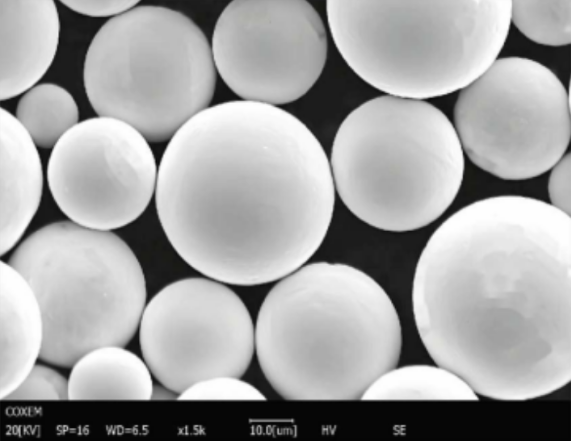
FAQs
| Frage | Antwort |
|---|---|
| Was ist Zweiphasenlegierungspulver? | Dualphasenlegierungspulver ist ein Werkstoff, der aus zwei unterschiedlichen Metallphasen besteht, in der Regel einer Kombination aus weichen und harten Phasen, die ein einzigartiges Gleichgewicht zwischen Festigkeit und Duktilität bietet. |
| Was sind die wichtigsten Anwendungen von Pulvern aus Zweiphasenlegierungen? | Sie werden in Branchen wie Automobilbau, Luft- und Raumfahrt, Industriemaschinen, Medizintechnik und Verteidigung eingesetzt, wo hohe Festigkeit und Verschleißfestigkeit entscheidend sind. |
| Wie werden Pulver aus Zweiphasenlegierungen hergestellt? | Diese Pulver werden in der Regel durch pulvermetallurgische Verfahren, einschließlich Zerstäubung und Sintern, hergestellt, die eine genaue Kontrolle über die Zusammensetzung und die Eigenschaften des Materials ermöglichen. |
| Warum werden zweiphasige Legierungen gegenüber einphasigen Legierungen bevorzugt? | Zweiphasenlegierungen bieten im Vergleich zu einphasigen Legierungen ein besseres Gleichgewicht der mechanischen Eigenschaften wie Festigkeit und Duktilität, was sie für anspruchsvolle Anwendungen vielseitiger macht. |
| Wo liegen die Grenzen bei der Verwendung von Zweiphasenlegierungspulvern? | Zu den wichtigsten Einschränkungen gehören die höheren Kosten, die komplexen Verarbeitungsanforderungen und die mögliche Empfindlichkeit gegenüber Umweltbedingungen. |
| Können zweiphasige Legierungspulver in der additiven Fertigung verwendet werden? | Ja, zweiphasige Legierungspulver werden zunehmend in der additiven Fertigung eingesetzt, da sie hochfeste, komplexe Teile herstellen können. |
| Welche Normen sollten Pulver aus Zweiphasenlegierungen erfüllen? | Je nach Anwendung sollten sie Industrienormen wie ASTM-, ISO-, AMS- und MIL-Spezifikationen entsprechen. |
| Wie wirkt sich die Partikelgröße auf die Leistung von Zweiphasenlegierungspulvern aus? | Kleinere Partikelgrößen können die Sinterfähigkeit und die mechanischen Eigenschaften des Pulvers verbessern, während größere Partikel für bestimmte Herstellungsverfahren bevorzugt werden können. |
| Gibt es bei Zweiphasen-Legierungspulvern irgendwelche Umweltprobleme? | Einige Dualphasen-Legierungen können empfindlich auf bestimmte Umweltbedingungen wie hohe Temperaturen oder korrosive Umgebungen reagieren, was ihre Leistungsfähigkeit beeinträchtigen kann. |
| Wie kann ich das richtige Dualphasenlegierungspulver für meine Anwendung auswählen? | Berücksichtigen Sie bei der Auswahl eines Pulvers aus einer Dualphasenlegierung Faktoren wie die erforderlichen mechanischen Eigenschaften, die Anwendungsumgebung, die Verarbeitungsmethoden und die Kosten. |
